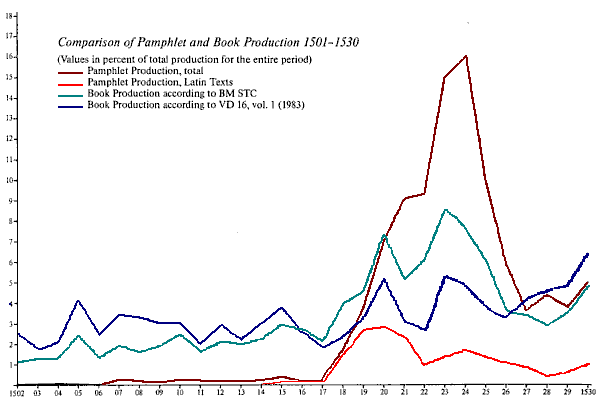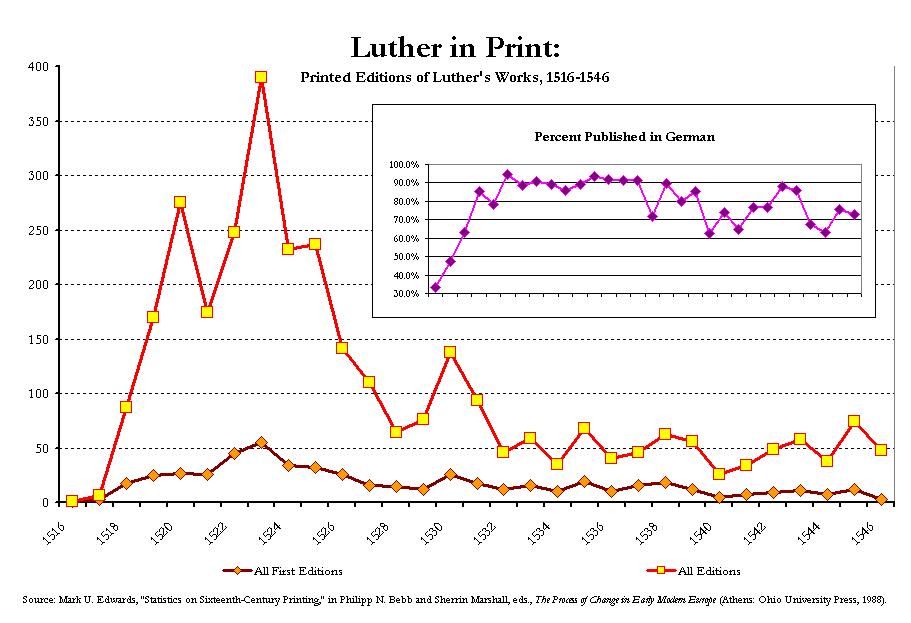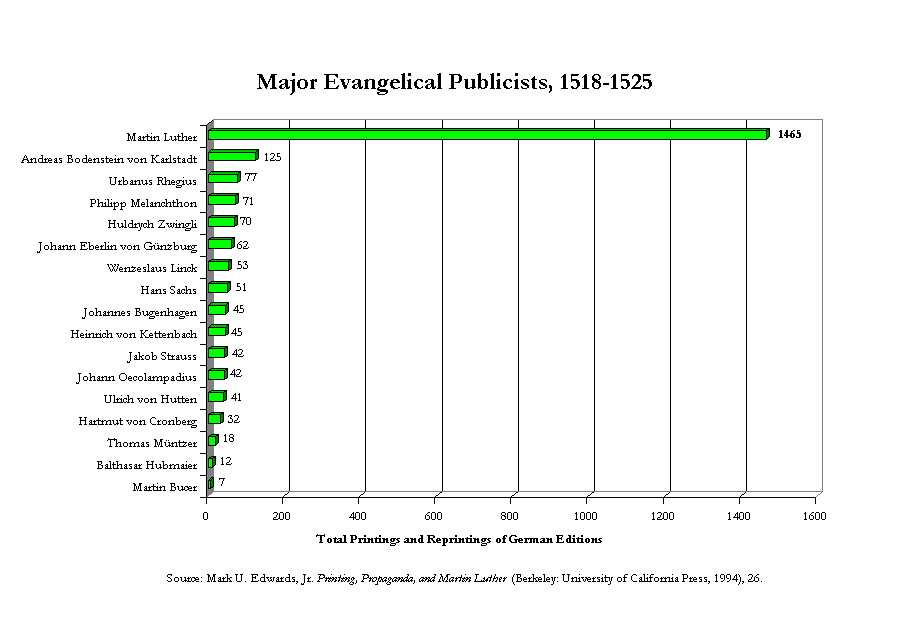 The
following charts convey an idea of how powerfully the dissemination of
Luther's ideas was accelerated by the then relatively new technology of
the printing press. Its effects seem to have caught Luther genuinely by
surprise. In 1522, he wrote about the rapid spread of his ideas, saying
The
following charts convey an idea of how powerfully the dissemination of
Luther's ideas was accelerated by the then relatively new technology of
the printing press. Its effects seem to have caught Luther genuinely by
surprise. In 1522, he wrote about the rapid spread of his ideas, saying
I opposed indulgences and all the papists, but never with force. I simply taught, preached, and wrote God's word; otherwise I did nothing. And while I slept or drank Wittenberg beer with my friends Philipp [Melanchthon] and [Nikolaus von] Amsdorf, the Word so greatly weakened the papacy that no prince or emperor has ever inflicted such losses on it. I did nothing; the Word did everything.
Luther is not writing specifically of printing here, but he later made the link to divine grace explicit. At one point, he refered to the printing press as "God's highest and most extreme act of grace, whereby the business of the Gospel is driven forward."
The chart at right shows the general dimensions of these changes. It contrasts the overall production of pamphlets and books in Germany between 1501 and 1530; for pamphlets, it also distinguishes between texts published in Latin and in the vernacular. Several phenomena stand out. One is the striking increase of publishing activity of all sorts in 1517 and 1518, the first years of the "Luther Affair." This flood of books and pamphlets continued until 1525, when it dropped off precipitously. The second trend worth noting is the discrepancy between book and pamphlet production during the high tide. Pamphlet production far exceeded book production during these years, and most of the pamphlets addressed some aspect of the religious controversy, usually advocating a pro-Luther position.

